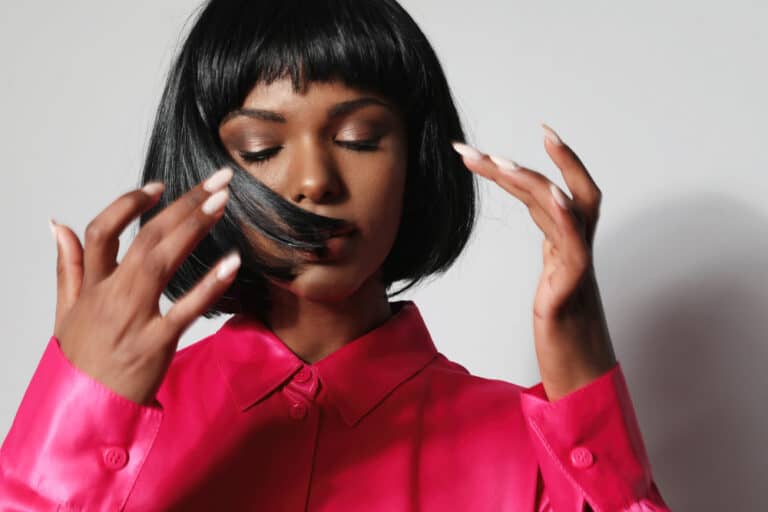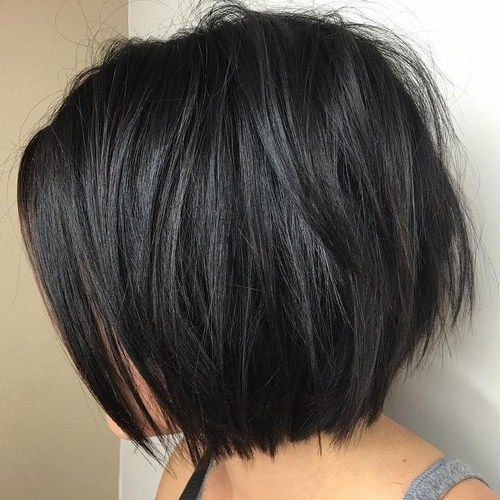Creating a stylish haircut at home is no longer a distant dream. If you're wondering how to cut bob yourself, this article will walk you step-by-step through the process. Whether you're a beginner or someone with basic hairdressing skills, cutting your own bob can save you money while still delivering professional results.
Cutting your own hair might seem intimidating, but with the right tools, techniques, and guidance, it’s entirely achievable. A bob haircut is timeless, versatile, and suits various face shapes. By learning how to cut bob yourself, you gain control over your look without relying on expensive salon visits.
Our guide focuses on providing practical advice, tips, and tricks to help you achieve a salon-worthy bob from the comfort of your home. Let’s dive in and explore everything you need to know about cutting a bob hairstyle.
Read also:Belton Stage Park
Table of Contents
- Introduction
- Tools You’ll Need for Cutting Your Bob
- Preparing for the Cut: Step-by-Step Guide
- Basic Techniques for Cutting a Bob
- Choosing the Right Bob for Your Face Shape
- Common Mistakes to Avoid When Cutting Your Own Bob
- Troubleshooting Haircut Problems
- Maintaining Your DIY Bob
- Expert Tips for Perfecting Your Bob
- Conclusion
Tools You’ll Need for Cutting Your Bob
Before you start learning how to cut bob yourself, it’s essential to gather the right tools. Having the proper equipment ensures precision and minimizes the risk of mistakes. Below are the tools you’ll need:
Essential Tools
- Hair scissors (sharp and specifically designed for hair cutting)
- Comb (a fine-tooth comb works best)
- Hair clips
- Mirror (preferably one that allows you to see the back of your head)
- Protective cape or towel
- Hairdryer (optional, for checking the final look)
Investing in quality tools is crucial, as dull scissors can lead to uneven cuts and damage your hair. According to hairstylists, using professional-grade scissors can significantly improve the outcome of your DIY haircut.
Preparing for the Cut: Step-by-Step Guide
Proper preparation is key to achieving a successful bob haircut. Follow these steps to ensure you’re ready before you begin:
Step 1: Wash and Dry Your Hair
Start with clean, dry hair. Wet hair stretches and can lead to uneven cuts, so it’s best to work with hair that’s completely dry. Use a light conditioner if needed, but avoid heavy products that can weigh down your hair.
Step 2: Section Your Hair
Divide your hair into sections using clips. This makes the cutting process more manageable and helps maintain symmetry. Begin with the top layer, then move to the sides and back.
Step 3: Set Up Your Workspace
Create a comfortable and well-lit workspace. Ensure you have mirrors placed strategically so you can see all angles of your head. A clean, clutter-free area will help you stay focused and organized.
Read also:Amatuer Couple Swap
Basic Techniques for Cutting a Bob
Understanding basic cutting techniques is vital when learning how to cut bob yourself. These methods will help you achieve a polished and professional look.
Point Cutting
Point cutting involves snipping small sections of hair at an angle to create texture and softness. This technique is especially useful for removing bulk and adding movement to your bob.
Layering
Layering involves cutting hair at different lengths to create depth and volume. For a classic bob, keep the layers subtle to maintain a sleek and structured appearance.
Blending
Blending ensures a smooth transition between different hair lengths. Use your scissors to gradually taper the ends, creating a seamless finish.
Choosing the Right Bob for Your Face Shape
Not all bobs are created equal. Selecting a bob style that complements your face shape is essential for achieving a flattering look. Below are some recommendations:
Oval Face Shape
An oval face shape suits almost any bob style. However, a chin-length bob with soft layers is particularly flattering.
Round Face Shape
Opt for a bob with added height on top and sharp angles around the jawline to elongate your face.
Heart-Shaped Face
A long bob with side-swept bangs can balance out a wider forehead and narrow chin.
Common Mistakes to Avoid When Cutting Your Own Bob
While cutting your own bob can be rewarding, there are pitfalls to watch out for. Here are some common mistakes and how to avoid them:
- Cutting too much hair at once – Always start with small snips and gradually work your way up.
- Ignoring symmetry – Use a mirror to check both sides of your head for evenness.
- Using dull scissors – Invest in sharp, high-quality scissors for precision cutting.
Troubleshooting Haircut Problems
Even with careful preparation, issues can arise during the cutting process. Here’s how to handle some common problems:
Uneven Lengths
If you notice uneven lengths, use point cutting to soften the look and create a more natural finish. Gently blend the areas that appear too short.
Too Much Bulk
Remove excess bulk by adding layers. Focus on the mid-lengths and ends to avoid making the hairstyle too heavy.
Maintaining Your DIY Bob
Once you’ve achieved your desired bob, it’s important to maintain its style and health. Follow these tips for long-lasting results:
Regular Trims
Schedule regular trims every 6-8 weeks to keep your bob looking fresh and prevent split ends.
Proper Haircare Routine
Use sulfate-free shampoos and conditioners to preserve your hair’s natural shine. Deep conditioning treatments can also help maintain softness and manageability.
Expert Tips for Perfecting Your Bob
Here are some expert tips to take your DIY bob to the next level:
- Practice on a wig or mannequin before attempting your real hair.
- Take photos during the cutting process for reference and comparison.
- Consult online tutorials and videos for visual guidance.
According to a study by the International Journal of Trichology, regular maintenance and proper cutting techniques can significantly enhance the longevity and appearance of a bob hairstyle.
Conclusion
Learning how to cut bob yourself opens up a world of possibilities for personalizing your hairstyle. By following this comprehensive guide, you can achieve a professional-looking bob that suits your unique features and preferences. Remember to use the right tools, prepare thoroughly, and practice proper techniques for the best results.
We encourage you to share your experiences in the comments section below. Let us know how your DIY bob turned out and any additional tips you’d like to share. For more haircare advice and styling tips, explore our other articles on the site.


